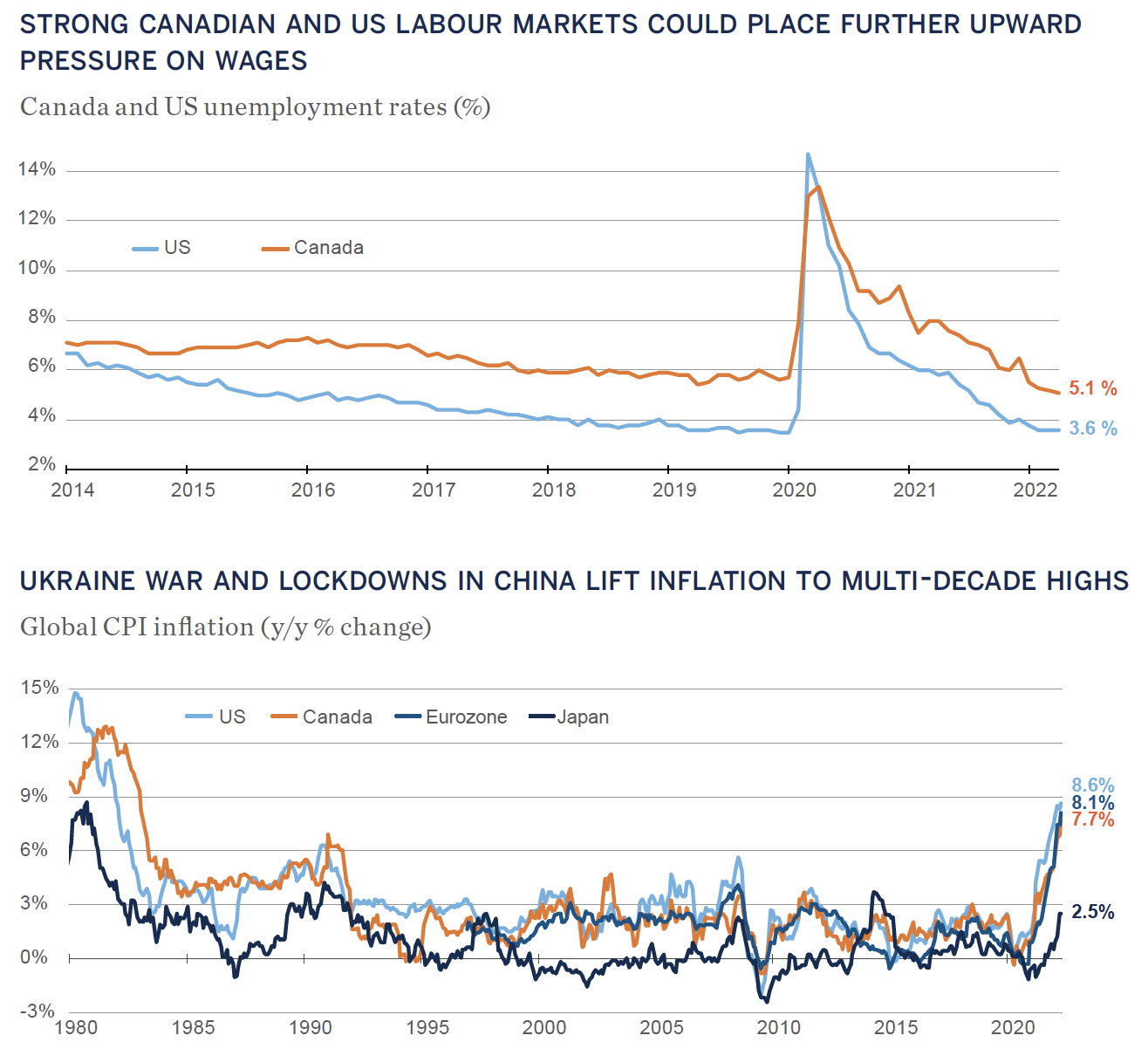A perfect storm for inflation is affecting policy and politics, says Lesley Marks, chief investment officer, equities, at Mackenzie Investments. As inflation rises, both central banks and governments must respond to it, and their response will challenge equity markets. However, Marks says it’s important to consider where we are in the business cycle, to remember that after every trough comes recovery and to make sure clients have equity exposure before the curve turns back up.

“After we go through a slowdown, which could be a recession, we will start to recover. Bonds will likely rally first, and then risk assets, especially stocks, will bounce back.LESLEY MARKS
CHIEF INVESTMENT OFFICER,
EQUITIES,
MACKENZIE INVESTMENTS
WHAT FACTORS ARE CONTRIBUTING TO THE CURRENT INFLATIONARY ENVIRONMENT?
First, supply and demand are out of balance because of a shift in spending habits over the past two and a half years due to the pandemic. We were seeing higher spending in stay-at-home goods and lower spending in services, travel and experiences. Now that’s shifting and creating a lot of dislocation in inventories. Also, overall supply was affected by disruptions in the supply chain while factories were shut down and the transport of goods was difficult. Then, just as we thought supply chain issues were resolving, omicron hit China. The recent lockdowns in massive cities like Shanghai and Beijing are affecting manufacturing and the movement of goods again.
Second is Russia’s invasion of Ukraine. The associated economic sanctions against Russia are having the strongest impact on energy commodities. In addition, because Ukraine is such a big producer of agricultural commodities like wheat and sunflower oil, food inflation is also on an upward spiral. Together, energy and food make up about 20% of the inflation basket, so upward pressure on prices in those two categories has had a significant effect.
The final blow in this perfect storm is on the labour side. We’re seeing unemployment levels near 100-year lows all over the world, but this is particularly pronounced in Canada and the United States. As companies have difficulty filling unfilled roles, productivity declines. At the same time, unions are demanding higher wages, and unions wield more power in a lowunemployment environment.
WHAT CAN ADVISORS TELL THEIR CLIENTS TO HELP KEEP THE STORM IN PERSPECTIVE?
For every action, there is a reaction. The monetary and fiscal liquidity injected into the system in response to the pandemic created a kind of euphoria around asset prices. The response to that now is to remove that liquidity quickly because inflation has risen so dramatically. Neither action is “normal.”
What is normal is a business cycle, and we haven’t had a good old-fashioned economic trough since the financial crisis. We’re in the eye of the storm right now, but when we come through it, we can start talking about a recovery, which will come as central banks stop increasing interest rates to combat inflation. After we go through a slowdown, which could be a recession, we will start to recover. Bonds will likely rally first, and then risk assets, especially stocks, will bounce back.
Another way to get perspective is to look back at history. In almost a century, we’ve seen bear markets in equities six times (defined as a greater than 20% drawdown). In five of those cases, equities moved up 20% or more the following year. The one exception was in 1930, which was an extraordinary time with features we don’t see recurring now.

Source: Bloomberg April 2022
HAVE YOU CHANGED YOUR APPROACH SINCE THE START OF THE PANDEMIC?
My approach hasn’t changed. I’ve always been focused on the fundamentals to form my outlook for asset classes – in particular, liquidity, sentiment and earnings. Liquidity relates to governments’ fiscal policy and central bankers’ monetary policy. More liquidity is good for risk assets, and less liquidity is generally negative. Sentiment is very important because it determines fund flows and pricing. If people are feeling optimistic about an asset class, they will pour money in to the point of overvaluation. Conversely, when sentiment is negative, things will swing in the opposite direction and likely to the point of undervaluation. Finally, earnings generally accompany strong economic growth, but they’re also affected by costs. So, inflation can shrink margins and dampen earnings. We continue to monitor these fundamentals.
WHERE ARE YOU FINDING THE BEST OPPORTUNITIES RIGHT NOW?
After a significant drawdown in both equities and bonds, there is a lot of opportunity. What we’re trying to do is find the best relative opportunities.
We’re global investors but, starting in the fall of 2021, we started to warm up to Canadian equities as a great place to invest. At the time, the S&P/TSX Composite Index paid a nice 2.5% dividend yield, and we also felt that a decade of poor investment in commodities would lead to supply constraints that would be good for commodity prices. Well before Russia’s invasion of Ukraine, we were bullish on this capital-deprived sector and knew that would be good for the Canadian economy – not just the energy sector. Six months later, there is more risk as we’ve seen a pretty extreme move in energy prices and energy stocks and a looming economic slowdown, but the supply constraints remain.
One area of caution for the Canadian economy is the housing sector, which is facing the headwind of higher interest rates, which translate into higher mortgage rates. Still, relatively speaking, we believe Canada is more attractive than other equity markets.
Beyond Canadian equities, we also believe that this economic recalibration will favour global equities that have stable characteristics. We expect global companies with durable businesses, stable and growing free cash flow, and sustainable dividends will also outperform in the equity arena.
WHAT’S YOUR OUTLOOK FOR EQUITIES THROUGH THE REST OF 2022 AND BEYOND?
I think there will be trading bounces, as there always are in the midst of a correction or a bear market, but the rest of the year will continue to be challenging for equities. We’re most of the way toward extricating ourselves from the negative aspects of liquidity. Sentiment is not negative enough to call a bottom for equities. And we have not seen any material downward revisions in earnings expectations yet. However, I’m confident we will come out of the storm and the sun will shine again – and that really ties back to the business cycle. After this downturn, there will be a recovery. And, ahead of that recovery, there will be a time to buy equities.


